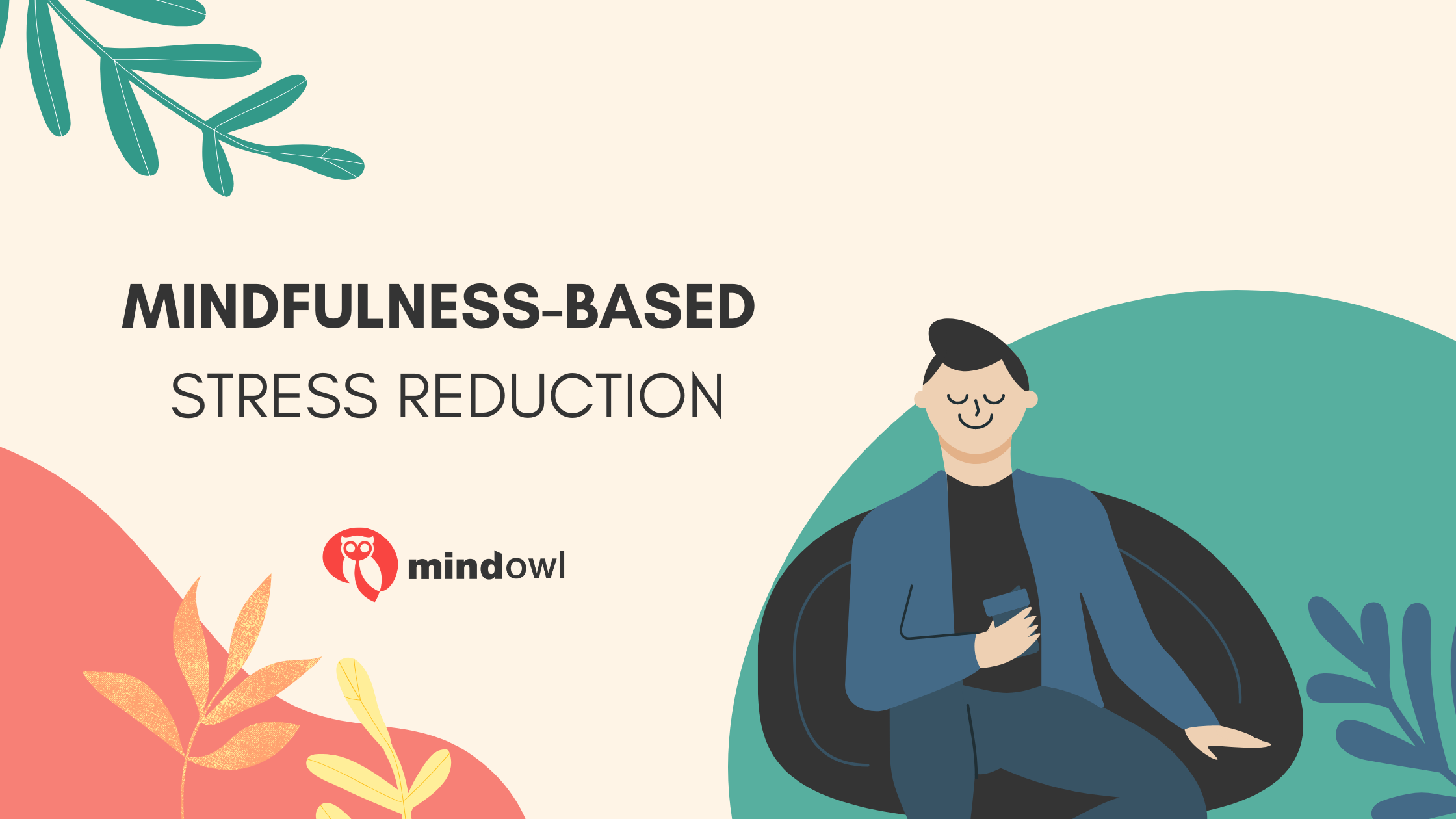Looking for a Mindfulness-Based Stress Reduction Training (MSBR) course? In this article, we cover everything you know before choosing the right training for you.
In a modern world full of distractions and overstimulation, we often feel like our minds are constantly racing, whether we’re stressing out about deadlines, making decisions, or just having conversations with friends and family. Yet if you’re feeling overwhelmed or anxious at any point in your day, mindfulness is a practice you can easily incorporate into your life to help slow down your thoughts, ease your stress, and improve your mental health and general quality of life.
What is Mindfulness-Based Stress Reduction (MBSR)?
Mindfulness-based Stress Reduction is an eight-week program created by Dr. Jon Kabat-Zinn in 1979 at the University of Massachusetts. The program teaches participants how to use the power of meditation to reduce stress levels and anxiety while improving their physical health. The MBSR course has been shown to be effective for people dealing with chronic pain, eating disorders, insomnia, depression symptoms or a generalized anxiety disorder. Much like other mindfulness practices, MBSR focuses on emotion regulation, with particular attention being applied to reducing emotional reactivity and the effects of stress. Today, we’re going to cover everything you need to know about MBSR training; what it is, how long it lasts, who it’s for, how much it costs, and more…
What does an MBSR Course Look Like?
MBSR can be applied in different ways, with specifics varying from one course to the next. However, the majority of courses use a similar structure. Generally, courses consist of weekly classes lasting 2.5 hours, which are often referred to as group meetings due to their interactive nature – group discussions are an essential part of the program. MBSR is not meant to be done on its own without a certified instructor. The course also includes a one-day retreat with a seven-hour mindfulness session and daily homework. As you can tell, it is a rather intensive course.

What techniques are used in Mindfulness Bases Stress Reduction Therapy?
Body scans
MBSR therapy uses a variety of meditative and movement practices. One of the most commonly used techniques is body scanning. A body scan exercise is a meditation practice that seeks to re-centre your focus to the current moment by encouraging body awareness and the noting of various different physical sensations. Body scanning can also be used as a relaxation technique to help you through stressful or difficult times, hence its importance within MBSR training. To try this technique, start by becoming aware of the sensation in the top of your head, and gradually move your awareness down your entire body. You should try to notice any negative emotions and any tensions you can feel in your body, making an effort to breathe slowly and ease the tension.
Mindful Movement
MBSR applies the principle that various types of physical activity can be utilised as mindfulness practice. Riding a bicycle, practising yoga, or taking a walk can all become mindful movement activities. Instead of relying solely on formal daily meditation practice, MBSR encourages you to move and breathe in a way that encourages mindfulness, awareness, strength and resilience.
Breathwork
Mindfulness-Based Stress Reduction training also uses breathwork practice to anchor practitioners to the present moment and really feel the movements and sensations of the body. Breathwork exercises can be used for a multitude of reasons; as well as providing greater calmness and peace of mind, breathwork practice can used to increase energy levels. For more on the beneficial effects of breathwork, check out our article on its energising powers.
Does Mindfulness-Based Stress Reduction (MBSR) work?
In a word, yes. Mindfulness-Based Stress Reduction does work. It provides many of the commonly known positive effects of mindfulness, while also providing some more specific benefits in terms of reducing symptoms of stress and managing attentional biases. The effectiveness of mindfulness-based interventions is often questioned; however, vast majority of people who participate in MBSR training report significant benefits. These benefits include a sense of relaxation, increased energy levels, and increased ability to deal with stress and chronic pain. MBSR is also supported by extensive research backing its ability to address a wide variety of issues including chronic pain, psychiatric disorders, anxiety, depression, and general psychological stress.
In terms of psychological benefits, the program can train your attention to help you cultivate self-awareness. The program encourages participants to incorporate mindfulness into their daily lives, a habit which can improve present moment-awareness and focus. These strategies help you avoid rumination on the past or future, as well as giving you the tools needed to respond not react, and improve your stress management skills. Emotional reactivity is often our knee jerk response to stress, but this only creates more problems. With the help of MBSR, you can learn to avoid emotional reactivity, respond to daily stresses and anxieties in a more measured manner, and thereby significantly improve your physical and mental health.
While the effects of MBSR can be great, it’s important to point out that the practice cannot ‘cure’ diseases. It is meant to be a complementary aid, either to traditional medical treatments or just as a provider of general support in your life. MBSR should be used in tandem with psychological treatment from professionals, not as a replacement for this treatment. So don’t forget to check with your doctor before using the program, and make sure that it can be used alongside your prescribed treatment.
What should I look for in an Mindfulness-Based Stress Reduction (MBSR) Program?
Firstly, make sure your instructor is certified. They may list the information regarding their certification and where they studied on their website, or they may be listed in a database. Always be sure to research the organization providing your MBSR course. Several universities have begun training MBSR teachers and offering classes to students – taking a program from a reputable university, or from someone who has been trained by them, is a good way to ensure you’re taking a true MBSR program. If you are not sure how highly regarded the organization you are looking at is, look up their reviews online or compare their website to the MBSR standards of practice to ensure the course will contain all of the necessary components to be considered an MBSR course.
Where Can I Find an MBSR Program?
Seeing as MBSR training originated in Massachusetts, where Dr Jon Kabat-Zinn created the program, it’s not surprising that there are many courses running in the United States. However, in recent years MBSR training has become more and more common around the world, particularly in Europe. The majority of courses available in the UK are online courses, and there are plenty to choose from. Here’s a selection of the best options.
- Mindful Leader’s course has excellent online reviews.
- You can’t go wrong with Jon Kabat-Zinn’s Official MBSR Training course.
- The British Mindfulness Institute also offer an eight-week program.
- Mindfulness UK’s MBSR Course is worth checking out.
- Finally, don’t forget to check our meditation courses
How much does MBSR cost?
MBSR courses generally cost around £200, with not too much sway on either side of that mark. The courses linked above range between £179 and £205.
How to get certified to teach MBSR
If you’re interested in teaching MBSR, there are several steps you need to take to become a qualified MBSR teacher. Firstly, any MBSR instructor must complete a number of prerequisites. These include participation in an 8-week MBSR class with a live instructor, a five to a seven-day silent retreat, and at least one to two years of personal, daily mindfulness practice. These prerequisites are universal across all MBSR Teacher Training institutions, although some institutions may have additional requirements, such as a master’s degree or yoga training.
This may sound like a lot; however, if you are hoping to teach mindfulness, it’s likely you will have already completed at least one year of personal daily mindfulness. If so, you can complete the other prerequisites within three to 4 months, and then you’re ready to get certified! When you’re at this position, it’s important that you choose the right course to pursue your certification.
Opportunities for certification within the UK are fairly limited, as the majority of courses based in America require in-person attendance. However, there are a couple of options. The Mindfulness Network is a UK-based charitable organisation that offers MBSR teacher training in conjunction with the Centre for Mindfulness Research and Practice at Bangor University. Their Trainee Handbook describes a program divided into three phases; Practising Teacher, Trained Teacher, and Competency-assessed Teacher. Certification as a Trained Teacher requires completion of a 9-week non-residency or 7-day residential program, known as the Teacher Training Retreat Level 1 (TTR1). Next, trainees teach three or more 8-week mentor-supervised MBSR courses, before completing an additional 5-day specialist training, a 2-day Inquiry workshop, a 5-day retreat and the submission of a portfolio.
As you can see, it’s a fairly comprehensive process. If you’d rather find a UK-based online course, one of great resource is the MBSR training provided by Mindfulness Northwest. The course can be completed in person, but the online version is also very useful and includes the same certification. It’s important to know that these courses are reasonably expensive; Mindfulness Northwest’s course costs £6700, while The Mindfulness Network’s MBSR teacher training is priced at £5000-£7500.

How long does it take to become an MBSR teacher?
Once you have completed the prerequisites (including two years of personal mindfulness practice), the process can be relatively short depending on the speed of your application. If you put your head down and really prioritise your training, you can become certified in a year or so. Check out this infographic for a detailed breakdown of the MBSR teacher training pathway. And once you’ve completed the training, there is money to be made in MBSR teaching, especially if you can master the art and become a trusted name within the industry.
Final thoughts
We’ve taken a deep dive into the potential benefits of Mindfulness-Based Stress Reduction, exploring the main reasons people choose to give it a try, whether that be to deal with chronic pain, or to reduce the symptoms of stress and emotional reactivity. We’ve also discussed what to look for in a course, guiding you through some of the best places to seek out MBSR training and digging into the details of various programs. For a bit more detail on all these issues, feel free to check out Positive Psychology’s MBSR content. It’s also worth noting that there are many key parallels between the mindfulness training offered within MBSR and the content provided within our new Real Happiness course, which combines mindfulness techniques with the latest psychology to help you become happier, calmer, and more content. If that sounds up your stress, check out the course here.
MindOwl Founder – My own struggles in life have led me to this path of understanding the human condition. I graduated with a bachelor’s degree in philosophy before completing a master’s degree in psychology at Regent’s University London. I then completed a postgraduate diploma in philosophical counselling before being trained in ACT (Acceptance and commitment therapy).
I’ve spent the last eight years studying the encounter of meditative practices with modern psychology.


